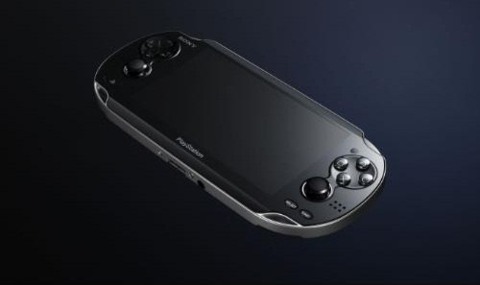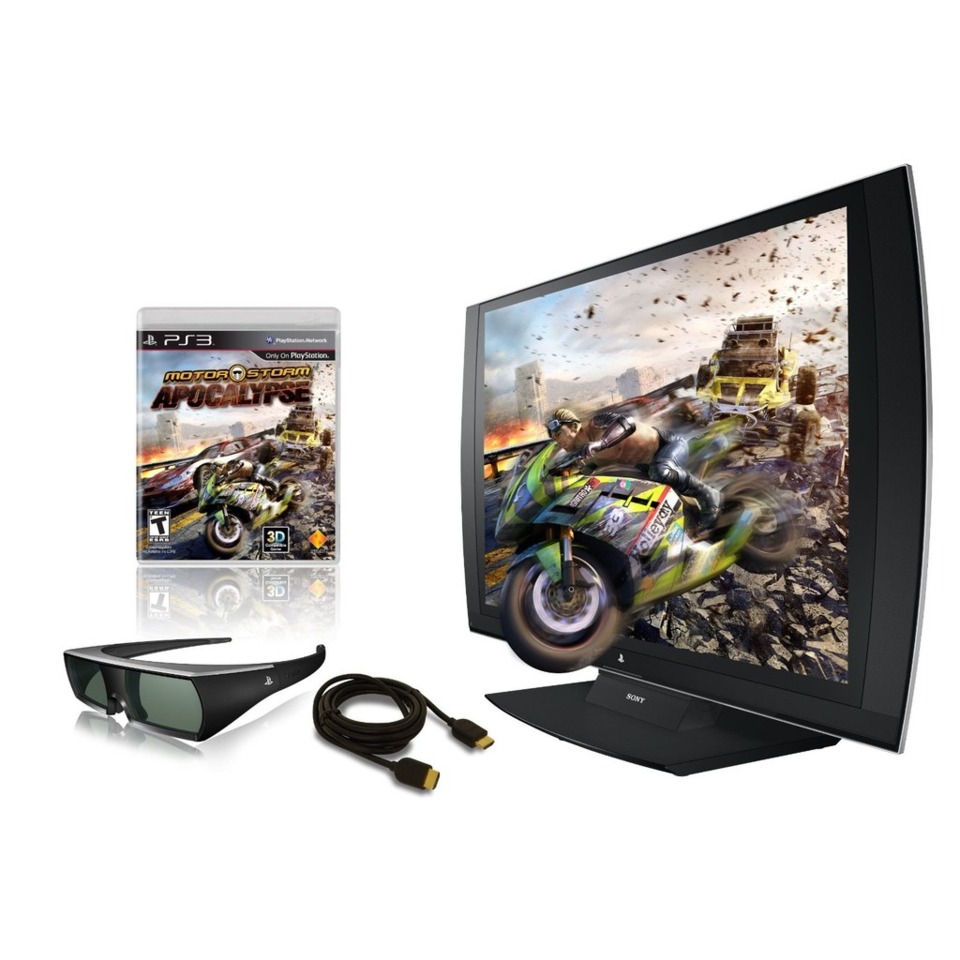Sony goes in-depth on 3D
Gamescom 2011: SCEE senior group studio director Mick Hocking gives a progress report on the PS3's 3D game push, says the technology's time has arrived, leaves door open for a 3D-capable iteration of PlayStation Vita.
Sony has been pushing stereoscopic 3D gaming on the PlayStation 3 for nearly two years, and the company is maintaining its commitment for the foreseeable future. This holiday season could be a particularly significant one for Sony's 3D initiative, as the electronics giant is releasing its own PlayStation-branded 3D monitor that will allow for full-screen two-player head-to-head gaming in supported titles, along with anticipated 3D-supporting titles like Resistance 3 and Uncharted 3.

To get the latest on Sony's 3D efforts, GameSpot talked to Sony Computer Entertainment Europe senior group studio director Mick Hocking at the recently wrapped Gamescom. Hocking went into detail on a number of subjects, including Sony's quality checks for 3D games, why the PlayStation Vita will launch as a 2D system, and why Sony isn't trying to single out a killer app for the new technology.
GameSpot: The performance of Nintendo's 3DS suggests that maybe gamers aren't quite as wild about the technology as previously thought. As an outside observer, has Sony taken any lessons from its competitor's struggles?
Mick Hocking: So I wouldn't comment directly on 3DS, but I think what we've seen over the last 12 months is a strong correlation between good-quality 3D content and great response from our fan base. The opposite is also true. When people see 3D that doesn't work very well, or content that isn't very compelling, I think quite naturally they're not as interested in it.
A message we've been giving to all of our PS3 developers is add 3D where it adds something to the game. It's not a tickbox we want on all the game boxes; we want 3D to add to the experience, whether it's enhancing a racing experience or creating greater immersion in Killzone or Uncharted 3. The other really important thing is to do it well. We've now got 10 3D quality checks that we want all games to adhere to. And we're telling everyone about how to do this. If 3D's done well, it can really enhance the game experience.
GS: Can you tell us about those 10 checks?
MH: They're things like making sure you have the same content in each eye. When you look at the real world, your eyes see exactly the same thing; the only difference is a horizontal offset. So when you produce in 3D, make sure both eyes are the same, make sure they're in sync. Make sure you're giving enough 3D to give the user a good 3D experience, but not too much to make it uncomfortable. And there are lots of technical things like depth conflicts and fusion issues.

We've had examples in the last 12 months with crosshairs in a shooter game is a good example. When you go into 3D, the crosshair is still on the screen, but the gun points into the screen and they don't line up. So you have to decide where in 3D space to draw your crosshair. If you draw it at the depth of the enemy, that's technically correct, but then as you move and pan around the scene, it's jumping because it sits at the depth of whatever it's looking at. So it's not very comfortable. With shooters, what we have to do is find a position at 3D space to draw the crosshairs so that it looks at the point the gun's aiming at, but it's between the end of the gun and the enemy, and adjusts slowly. So there are lots of things like that we ask developers to look out for.
GS: That sounds like rigorous quality control for 3D at Sony. Do you feel like 3D movies in cinemas are spoiling it for everyone else, spoiling consumers on the experience?
MH: I think it's back to my earlier point. Consumers are very savvy with quality in all aspects of media, whether that's the story, the dialogue, the special effects. And 3D is the same. They can tell 3D when it's done well. It's important when 3D is done, it's done correctly and considered.
GS: The PlayStation Vita is conspicuously 2D. Was 3D discussed for the handheld? What was the reason that feature was left out?
MH: At the time we were looking at Vita, there were several issues. One was the quality of the glasses-free 3D screens. It can work very well on small screens, but to get the best effect, you need to keep your head very, very still. Now with a handheld gaming device and Vita having Sixaxis motion control in it, there may be gameplay where you're moving the Vita around. And if you're doing that and having glasses-free 3D, the two things don't sit very well together. We wanted to offer a really, really high-resolution OLED screen, and the best way to do that was in 2D. At least for the first one.
GS: Consumers often wait until gaming hardware has a killer app before they invest in it. Will there be a killer app for 3D TV adoption, or is it just a matter of amassing enough high-profile 3D-capable games?

MH: I think it will be gradual. We've seen a gradual growth over the last 12 months, and we see that continuing and getting stronger, if anything. The price of 3DTVs is coming down rapidly. The glasses are improving all the time. In the next three or four years, about half of all new TVs will support 3D, and that number will grow rapidly. The TV manufacturers are just building this into their production processes now and having it as a value-added feature.
One thing we've tried to be careful of is with cinema, Avatar is the pinnacle of 3D. In games, I've been asked where is the Avatar of games, the big killer app. And we don't want just one of those. We're working really hard to make all of our games very high quality in 3D. We don't want peaks and troughs. We want a consistent level of quality.
GS: Does Sony have a sense of what proportion of PS3 gamers are experiencing 3D?
MH: It's growing rapidly. And to enjoy 3D, you need a 3D display, so it is a function of how fast the 3DTV market is growing. I don't have specific figures today, but we've had a very successful first 12 months. We've got 50 million 3D-enabled PS3s out there, more than 50 3D games which have had great reception so far.
GS: What is the ideal 3D setup for gaming? Active glasses or passive? LCD or plasma? Does Sony expect the market to tilt in any particular direction?
MH: My completely unbiased answer would be a 3D Bravia with a PS3. [Laughs] It's about quality for us. In all of our electronics and software, we're pushing for quality because you do need good quality for 3D. I think there's a lot of good quality out there at the moment and it's improving all the time. In the next couple of years, all the problems will probably get solved and the prices will come down. Our job is to keep the software improving at the same level.
GS: And perhaps lower-priced 3D as well, seen with the small Sony TV that allows same-room, non-split-screen multiplayer.

MH: It's actually a monitor, not a TV, as it hasn't got a tuner in it. But that's PlayStation's first monitor. It's really fantastic. We've worked very closely with the team developing that in Japan. You're getting full high-def 2D and 3D, and a very high quality screen. It's an ideal one for the second room in the bedroom or the office. And we've been able with the single-view technology to now give them the ability to do two-player fullscreen head-to-head gaming. It's extremely effective. It's quite weird to watch when you see one person bowling and one person batting, but you can't see each other's screens.
What's great for us is a year ago, this was an R&D exercise, an idea we had. And now we've released it in the market a year later. That's really exciting for us because it shows we can come up with new technology ideas and get them out to market quickly.
GS: We asked you this last year, but it's always good to get an update. How far are we from glasses-free 3D TV sets as a viable option for consumers?
MH: At the moment, the best way to get high-quality 3D is with active shutter glasses. If you want full high definition, you need active shutter glasses and a Sony Bravia screen. There are glasses-free TVs now, from small screens to large screens. The issue with glasses-free is however you do it, you've got to get a different image to each eye. So you're essentially playing with the laws of physics here. You can use filters on the screen, prisms, lenses… And they can work very well for a single viewer, as long as you keep your relative position to the screen constant. The problem comes when you move your head relative to the screen and you see artifacts, or when you want three viewers to enjoy the same experience. Lots of people are working on this at the moment.
With glasses, we think if the content is compelling enough, people don't mind wearing them because they're being excited and amazed by the 3D experience. But there are a lot of people working on glasses-free, and I don't know how long it will take because it is a very difficult problem to solve. There is a technique called integral imaging which possibly offers a solution. The issue at the moment is it's hard to build into a display at a very high resolution. It's like a collection of very, very small fish-eye lenses. So if you imagine we took a picture of you with a special integral imaging camera, we'll have a whole array of tiny pictures of you with fish-eye lenses, so it captures the light from every angle. And then you have fish-eye lenses on the screen, so that wherever I sit and look at it, each eye is getting the light as it would have done from any point in front of you. So it means you can have true 3D from any angle, but it's very, very difficult to think how we could build that into a display.
GS: EA has said that it's not so keen on pressing users with 3D. It would rather follow what the users are interested in adopting, so it's going off with social and mobile. Do you feel the better approach is to push it more because consumers don't know how great 3D is going to be?
MH: Our position on 3D is it's a great new feature for many games. One thing we've been saying is that it's also very low investment…at a maximum around 2 percent of the dev budget, but mostly around half a percent of the development budget. It's a couple of coders for a few months to actually get it integrated, and then some creative work with designers to understand it. 3D can be done very well at low investment, and we think it's a great feature to offer all our gaming fans.
GS: We've seen waves of 3D tried and failed in decades gone by. Why is it going to succeed this time when it hasn't succeeded before?
MH: What's different about today is this is the first time we've been able to offer high-quality 3D: a high-quality display with high resolution, high refresh rates, high-quality software and movie experiences. Previously, you could have high quality at huge expense, or you could have low-cost items, but it was difficult to achieve any kind of quality. So this is the first time the technology's really allowed us to do high-quality 3D. I think this time we'll see 3D continue to be adopted and continue to grow. It'll just be another way to enjoy gaming experiences. I don't think it's going to replace 2D, but it'll be another way to enjoy certain types of games.
Fallout 4 Next Gen Update Comparison Stellar Blade - Hard Mode No Damage Abaddon Boss Gameplay Stellar Blade - (Almost) All Outfits Granblue Fantasy: Relink - New Content Trailer Modern Warfare III - New Season 3 Reloaded Modern Warfare Zombies Update River City Girls 2 - New Playable Characters DLC Reveal!! Stellar Blade - Hard Mode No Damage Gigas Boss Gameplay That Time I Got Reincarnated as a Slime ISEKAI Chronicles – Official Announcement Trailer MEGATON MUSASHI W: WIRED – Official OP “MUSASHI English Ver.” Trailer Gothic 1 Remake | Official Collector's Edition Trailer SaGa Emerald Beyond – Official Launch Trailer Paper Mario: The Thousand-Year Door – Official Switch Overview Trailer
Please enter your date of birth to view this video
By clicking 'enter', you agree to GameSpot's
Terms of Use and Privacy Policy
Got a news tip or want to contact us directly? Email news@gamespot.com
Join the conversation